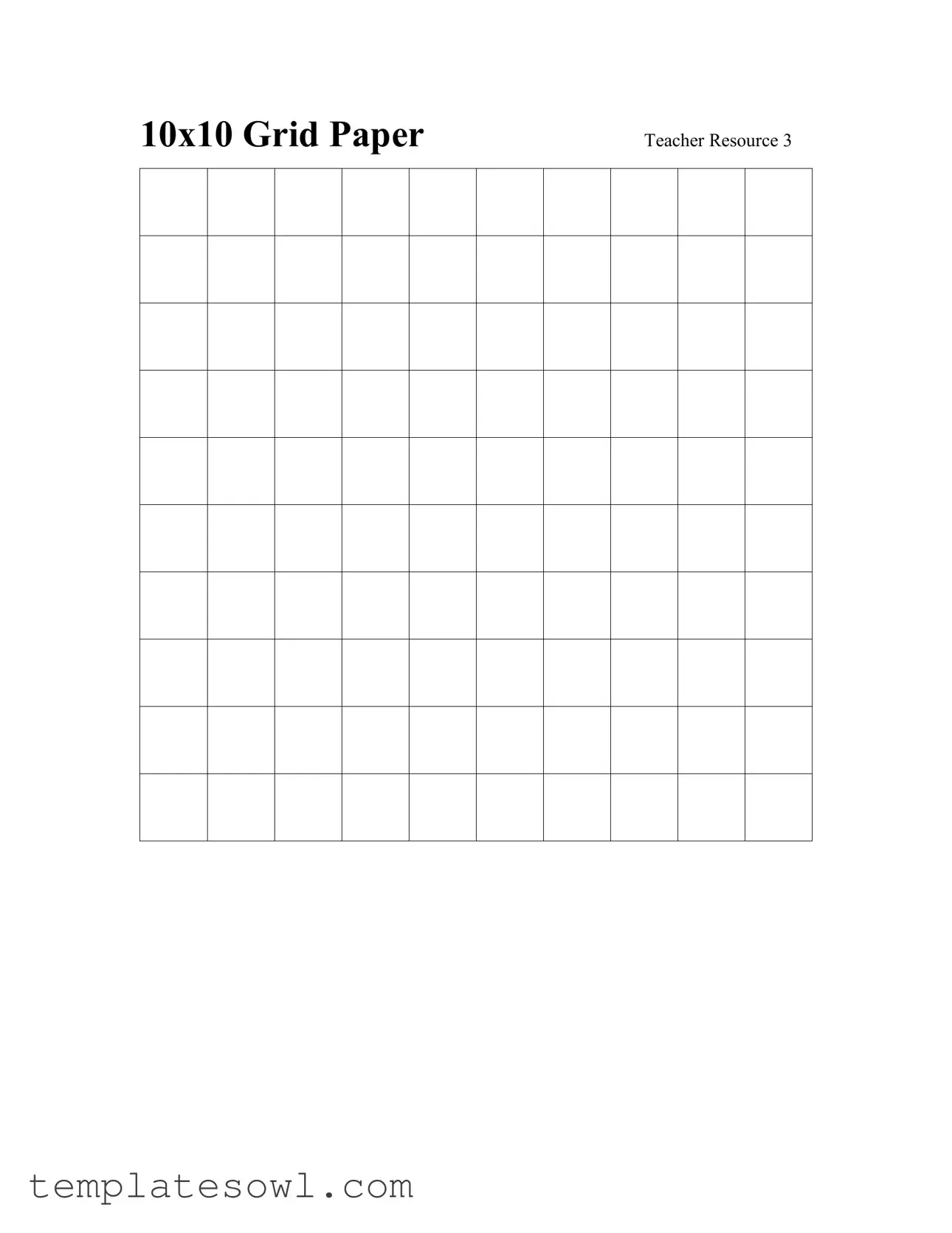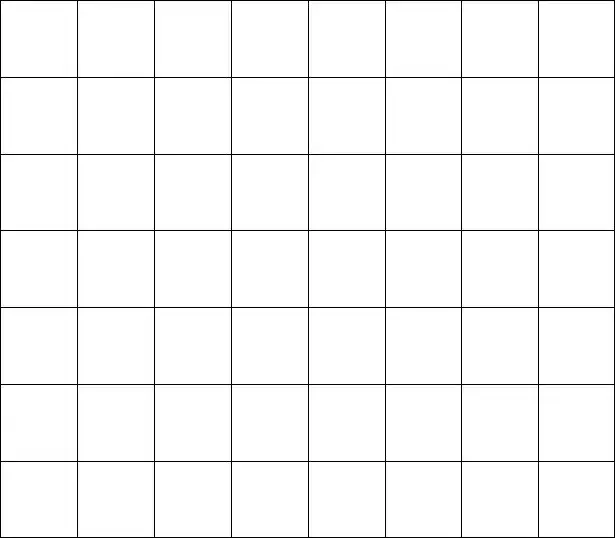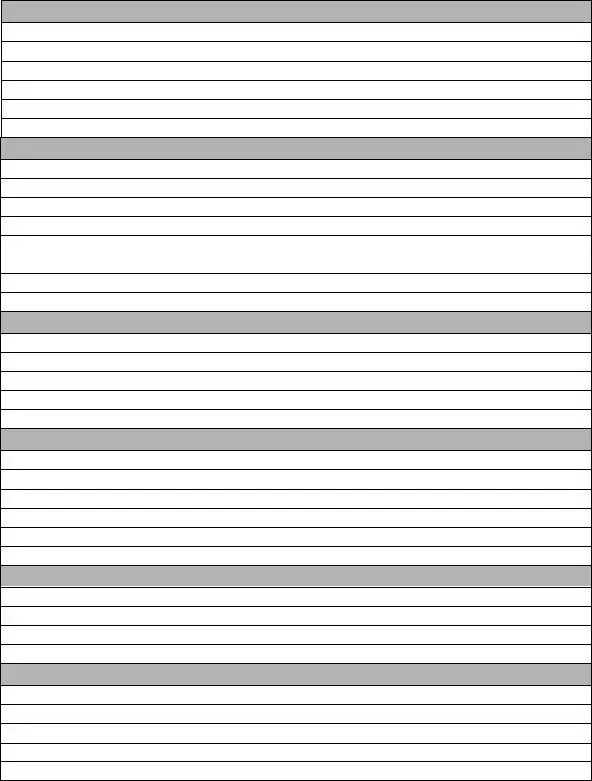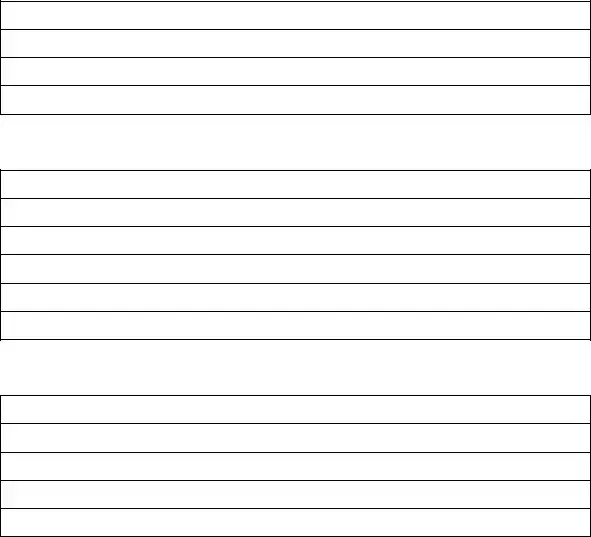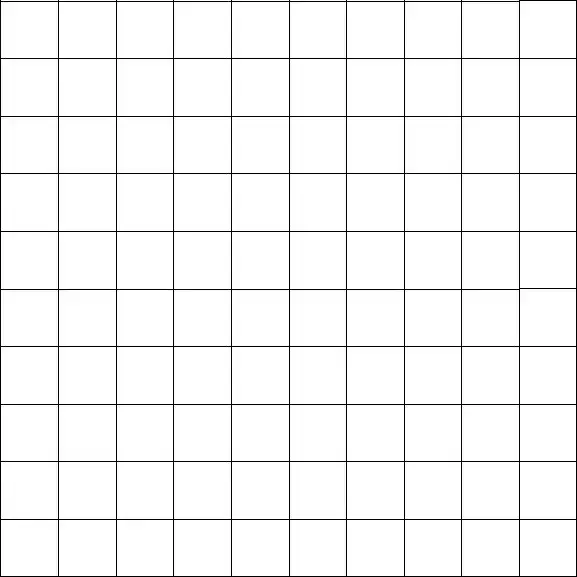Teacher Resource 4
Summative Assessment
Answer Key
1. What is a repeating pattern?
A repeating pattern is a set of shapes that are repeated over and over again.
2. Extend the pattern
Students should draw the shapes of this
core and repeat the core at least once.
3.What kind of pattern do you see?
I see a core of a rhombus, triangle, square and parallelogram in a repeating pattern.
4.Describe the core of this pattern.
The core consists of a rhombus, triangle, square and parallelogram
5.On a 10 by 10 chart, what core will give you a diagonal to the left?
A core of three (3) shapes
6.If the chart were an 8x8 grid would the diagonal core still be to the left? Justify Your answer by completing a pattern on an 8x8 chart.
Yes; it will show diagonal core to the left.
7.If the core of a rhombus, triangle, square and parallelogram were extended to the
16th element:
a.How many blocks will be triangles? 4
b.How many blocks will be rhombuses? 4
c.Explain your response.
|
|
|
|
|
|
|
|
|
|
|
|
|
|
|
Teacher Resource 4 |
|
|
|
|
Let: |
|
r = rhombus |
|
|
|
|
|
|
|
|
|
|
|
|
|
|
|
|
t = triangle |
|
|
|
|
|
|
|
|
|
|
|
|
|
|
|
|
|
s = square |
|
|
|
|
|
|
|
|
|
|
|
|
|
|
|
|
|
p = parallelogram |
|
|
|
|
|
|
|
|
|
|
|
|
|
|
|
|
|
|
|
|
|
|
|
|
|
|
|
|
|
|
1 |
2 |
3 |
|
4 |
|
5 |
6 |
7 |
8 |
9 |
10 |
11 |
12 |
13 |
14 |
15 |
16 |
|
|
r |
t |
s |
|
p |
|
r |
t |
s |
p |
r |
t |
s |
p |
r |
t |
s |
P |
|
Possible Solution 2
Other possible solution could be by drawing the pattern showing the 16 elements
Assessment Tool –Rubric
2 – Student able to explain clearly how he/she is able to demonstrate the understanding of extending and creating patterns and accurately answered the problems.
1 – Student demonstrated how to extend the pattern by did not understand how the patterns are made.
0 – No clear understanding of the concept.
Student Resources |
Student Resource 1 |
Pattern Descriptions
Description 1
1.This core has four elements.
2.Three of the shapes are the same.
3.The fourth shape has one more side than the other shapes.
4.One of the shapes is a triangle.
5.The core follows an AABA pattern.
6.Repeat this core three times.
Description 2
1.This core has four elements.
2.Two of the shapes are the same.
3.Two of the shapes have fewer sides than the others.
4.One of the shapes is a triangle.
5.With one of the four-sided shapes, one of those sides is longer than the other three.
6.The core follows an ABCB pattern.
7.Repeat this core three times.
Description 3
1.This core has two elements.
2.One shape is bigger by one side than the other shape.
3.None of the shapes have six sides or more.
4.The core follows an ABAB pattern.
5.Repeat this core six times.
Description 4
1.This core has four elements.
2.Two of the shapes are the same.
3.Two of the shapes have fewer sides than the others.
4.One shape is hexagon.
5.The core follows an ABCA pattern.
6.Repeat this core three times.
Description 5
1.This core has three elements.
2.One shape has six sides.
3.None of the shapes are the same.
4.All of the shapes have a different number of sides.
Description 6
1.This core has 3 elements.
2.Two of the shapes are the same.
3.All of the shapes have the same number of sides.
4.One of the shapes is a rhombus.
5.None of the shapes have right angles.
Student Resource 2
Rug Word Problems
Use colored blocks to create the rug.
Rug problem 1
1.Andre 3000 wants a 10x10 rug with a checkered pattern.
2.He wants at least 3 colors to be in his rug.
Use colored blocks to create the rug.
Rug problem 2
1.Lebron James wants a 10x10 rug with a diagonal pattern.
2.He wants the colors to go diagonally to the left.
3.He wants at least two colors in his rug.
Use colored blocks to create the rug.
Rug problem 3
1.Clinton Portis wants a 10x10 rug with a vertical pattern.
2.He wants two colors in his rug.
Student Resource 3
Summative Assessment
1.What is a repeating pattern?
2.Extend the pattern.
___________________________________
_____________________________________________________________________
3. What kind of pattern do you see?
_____________________________________________________________________
4.Describe the core of this pattern.
___________________________________________________
5.On a 10 by 10 chart, what core will give you a diagonal to the left?
___________________________________________________
Student Resource 3 (Cont.)
6.If the chart were an 8x8 grid would the diagonal core still be to the left? Justify
your answer by completing a pattern on an 8x8 chart. (Ask teacher for chart paper)
7.If the core of a rhombus, triangle, square and parallelogram were extended to the 16th element:
a.How many blocks will be triangles?
_______________________
b.How many blocks will be
rhombuses?______________________
c. Explain or justify your response.
______________________________________________________
______________________________________________________
